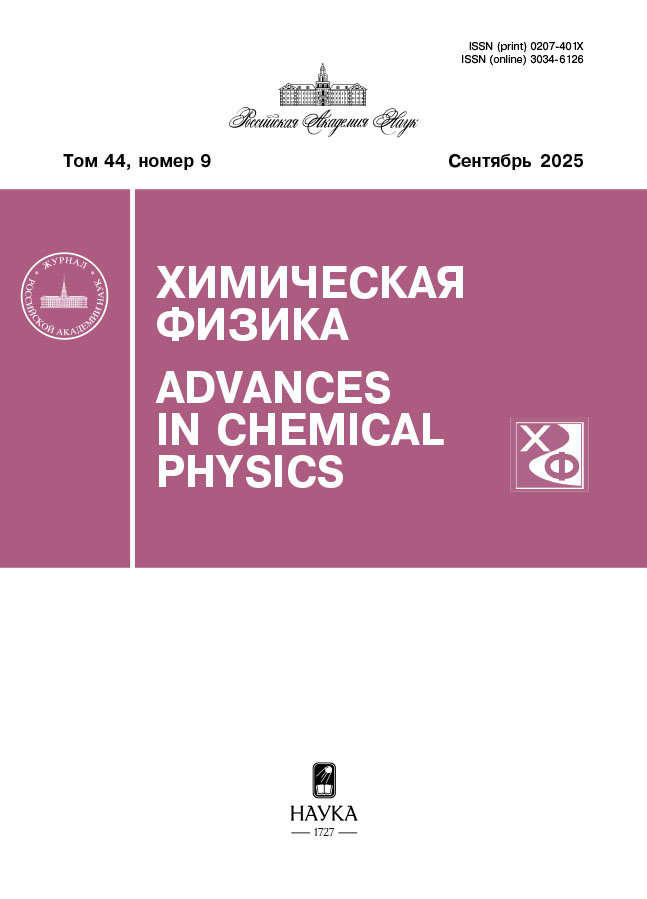Deuterium Substitution and Charge Retention in Ions of Organic and Bioorganic Compounds. Part 2. Apamin Complex
- Autores: Raznikov V.V.1, Raznikova M.O.2, Chudinov A.V.1, Sulimenkov I.V.1
-
Afiliações:
- Semenov Federal Research Center for Chemical Physics, Russian Academy of Sciences
- Federal Research Center of Problems of Chemical Physics and Medicinal Chemistry, Russian Academy of Sciences
- Edição: Volume 44, Nº 9 (2025)
- Páginas: 22-34
- Seção: Элементарные физико-химические процессы
- URL: https://rjeid.com/0207-401X/article/view/690773
- DOI: https://doi.org/10.31857/S0207401X25090026
- ID: 690773
Citar
Texto integral
Resumo
The correspondence between the mass spectral components obtained by the separation of hydrogen/deuterium exchange (HDX) mass spectra of multiply charged ions of the apamin complex and specific structural forms of these ions has been confirmed. As in the case of apamin, the separation method is based on the best approximation of HDX mass spectra of multiply charged ions by a linear combination of several H/D/z peak distributions. These distributions assume independent replacement of exchangeable hydrogen atoms with deuterium and independent retention of z charge carriers. Based on the analysis of the complete set of HDX data for the apamin complex, including cases where the spectra of ions with certain charges were excluded, it is shown that the ion charge has no significant effect on the HDX processes of the major components (with contributions above 3%) during residual deuterium exchange in the apamin complex. In the presence of an ND3 gas flow, the observed changes for ions with different charges are minor and affect only the contributions of the major HDX mass spectral components, without taking into account the presence and localization of minor components with contributions below 10%.
Sobre autores
V. Raznikov
Semenov Federal Research Center for Chemical Physics, Russian Academy of Sciences
Email: raznikova.mari@yandex.ru
Moscow, Russia
M. Raznikova
Federal Research Center of Problems of Chemical Physics and Medicinal Chemistry, Russian Academy of Sciences
Email: raznikova.mari@yandex.ru
Chernogolovka, Russia
A. Chudinov
Semenov Federal Research Center for Chemical Physics, Russian Academy of Sciences
Email: raznikova.mari@yandex.ru
Moscow, Russia
I. Sulimenkov
Semenov Federal Research Center for Chemical Physics, Russian Academy of Sciences
Autor responsável pela correspondência
Email: raznikova.mari@yandex.ru
Moscow, Russia
Bibliografia
- Dodonov A.F., Chernushevich I.V., Dodonova T.F., Raznikov V.V., Talroze V.L. Method of mass spectrometric analysis by time of flight of a continuous ion beam: А.C. 1681340. USSR // B.I.1991 № 236.
- Dodonov A.F., Kozlovski V.I., Soulimenkov I.V. et al. // Eur. J. Mass Spectrom. 2000. V. 6. № 6. P. 481. https://doi.org/10.1255/ejms.378
- Raznikov V.V., Raznikova M.O., Sulimenkov I.V., Zelenov V.V. // Anal. Bioanal. Chem. 2023. V. 415. № 12. P. 2193. https://doi.org/10.1007/s00216-023-04625-7
- Raznikov V.V., Raznikova M.O., Sulimenkov I.V., Zelenov V.V. // Mass-Spectrometry. 2023. V. 20. № 2. P. 77. https://doi.org/10.25703/MS.2023.20.08
- Raznikov V.V., Raznikova M.O., Pridatchenko M.L. // Mass-Spectrometry. 2016. V. 13. № 2. P. 124.
- Kuzmenkov A.I., Peigneur S., Nasburg J.A. et al. // Front. Pharmacol. 2022. V. 13. 977440. https://doi.org/10.3389/fphar.2022.977440
- Kramer G. Mathematical Methods of Statistics. Moscow: Mir, 1975.
- Abzalimov R.R., Kaltashov I.A. // J. Am. Soc. Mass Spectrom. 2006. V. 17. № 11. P. 1543. https://doi.org/10.1016/j.jasms.2006.07.017
- Shishkina L.N., Kozlov M.V., Konstantinova T.V., Smirnova A.N., Shvydkiy V.O. // Russ. J. Phys. Chem. B. 2023. V. 17. № 1. P. 141. https://doi.org/10.1134/S1990793123010104
- Smirnova A.N., Shvydkiy V.O., Shishkina L.N. // Russ. J. Phys. Chem. B. 2021. V. 15. № 4. P. 710. https://doi.org/10.1134/S1990793121040102
- Stepanov V.M. Molecular biology. Structure and functions of proteins. Moscow: Nauka, 2005.
- Shaitan K.V. // Russ. J. Phys. Chem. B. 2023. V. 17. № 3. P. 550. https://doi.org/10.1134/s1990793123030259
- Moskalenko I.V., Tikhonov I.V. // Russ. J. Phys. Chem. B. 2022. V. 16. № 4. P. 602. https://doi.org/10.1134/S1990793122040121
- Raznikov V.V., Pikhtelev A.R., Dodonov A.F., Raznikova M.O. // Rapid Commun. Mass Spectrom. 2001. V. 15. № 8. P. 570.
- Yakovleva M.A., Radchenko A.S., Kostyukov A.A. et al. // Russ. J. Phys. Chem. B. 2022. V. 16. № 1. P. 90. https://doi.org/10.1134/S199079312201033X
- Vasilieva A.D., Yurina L.V., Azarova D.Y. et al. // Russ. J. Phys. Chem. B. 2022. V. 16. № 1. P. 118. https://doi.org/10.1134/S1990793122010316
- Zelenov V.V., Aparina E.V. // Russ. J. Phys. Chem. B. 2024. V. 18. № 3. P. 821. https://doi.org/10.1134/S1990793124700246
- Eganov A.A., Kardonsky D.A., Sulimenkov I.V. et al. // Russ. J. Phys. Chem. B. 2023. V. 17. № 2. P. 503. https://doi.org/10.1134/S1990793123020240
Arquivos suplementares










